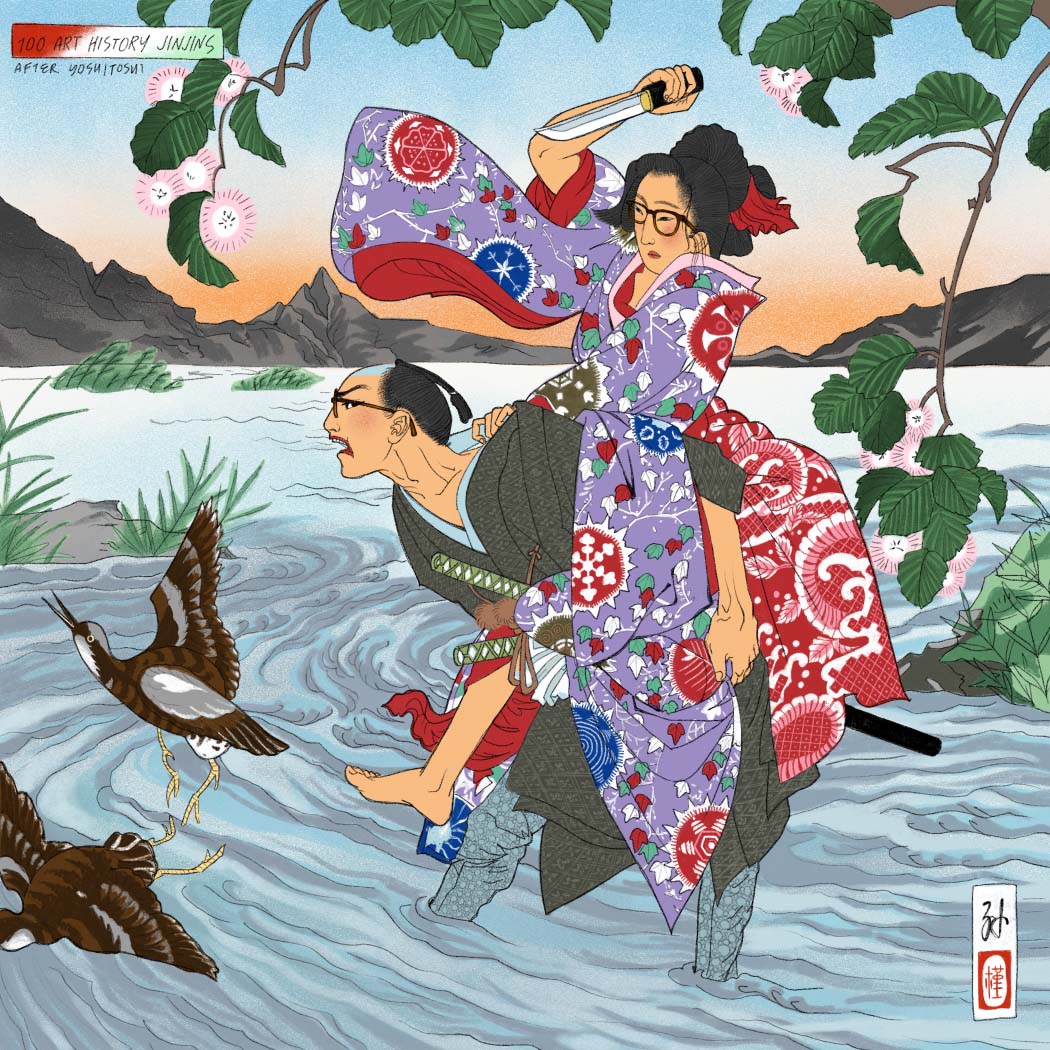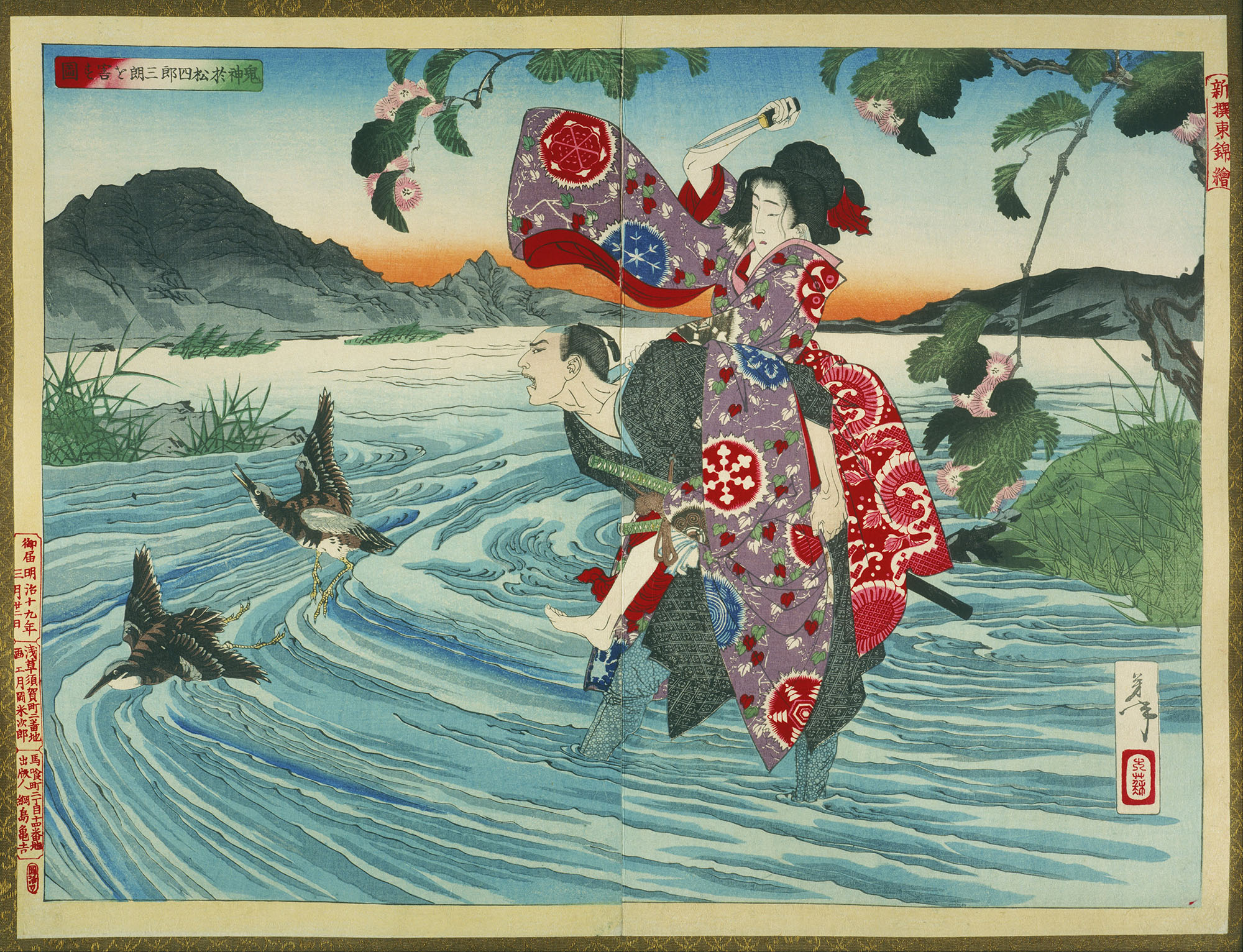63/100
The Demon Omatsu Murders Shirosaburō in the Ford
-
Artist
Tsukioka Yoshitoshi
-
Year
1885
-
Culture
Japanese
-
Date of Copy
I've loved Ukiyo-e art since a high school field trip to the Freer and Sackler galleries. They had an exhibition of Hokusai prints and it really stuck with me. For this project, I really wanted to pay tribute to Ukiyo-e, so I went looking on Google Arts and Culture and found this one by Tsukioka Yoshitoshi.
It seems like this story has many variations. The gist is that the man is carrying a beautiful woman across a river, when she attacks him. In many variations it's an act of revenge--she's the daughter of an enemy warrior, or his dead wife who he had killed. There's a bit more information here. For me, it sort of fits in with the Judith/Holofernes genre in Western art.
Ukiyo-e was a huge inspiration to Western art. The Impressionists and Post-Impressionists were obsessed with it. Van Gogh did some straight-up copies. Its use of flat color, patterning, and asymmetrical compositions got infused into all kinds of things. In Japan, these prints weren't necessarily seen as capital A Art, but rather popular decorations. Subject matter included fan posters of Kabuki actors, gory horror scenes, and erotica. The designer of this print, Tsukioka Yoshitoshi, is one of the last great prolific masters of the genre and is especially well-known for his violent horror scenes. Even he was reduced to poverty and was burning his own floorboards for warmth in the middle of his career.
Putting the patterns into the kimono was the funnest part of this drawing. I do have a few regrets with this one: I wish I'd obscured the man's head, and I wish I'd put glasses on the ducks.
Reference image from Wikimedia Commons. This print is now in the Philadelphia Museum of Art.

